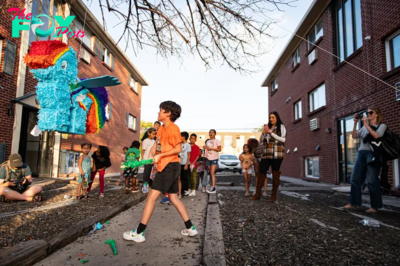Education
Socioeconomic status explains most of the racial and ethnic achievement gaps in elementary school
For decades, white students have performed significantly better than Black and Hispanic students on tests of academic achievement. Explanations for these achievement gaps include poverty and systems that result in discrimination. Others cite struggles to learn English. And some folks believe that some groups simply don’t value education.
Our new report shows that gaps in achievement between white, Black and Hispanic students in elementary school are primarily explained by differences in family socioeconomic status. That is, kindergartners from families with similar economic resources and educational backgrounds – among other factors – later displayed similar levels of achievement. This was true regardless of their race or ethnicity.
While earlier studies defined a family’s socioeconomic status by one or two factors, such as income, we looked at 11 different elements. These included family income, the level of education attained by parents, and the jobs that parents held.
We followed two groups of children from kindergarten through fifth grade. The first group started school in the 1998-99 academic year. The second group started in the 2010-11 academic year. We looked at their scores on achievement tests administered by the National Center for Education Statistics.
Our research shows that some factors have more impact on gaps in achievement than others. For example, gaps in achievement between Black and white students, and between Hispanic and white students, were smaller when students came from families with similar household incomes. They were also smaller when students’ mothers had similar levels of education.
We found that students from families with lower socioeconomic status did worse than kids from families with higher status. By first grade, Black and Hispanic students, who are more likely to face economic challenges and to come from low-income families, were already substantially behind their white peers in reading, mathematics and Science.
The achievement gaps continued throughout elementary school. A family’s socioeconomic status – especially household income and parental education – explained between 34% and 64% of the achievement gaps between white and Black students. It also explained between 51% and 77% of the gaps between white and Hispanic students. Explanations for the remaining gaps may include differences in school quality, neighborhood conditions and access to school-based services.
Why it matters
Left unaddressed, racial and ethnic achievement gaps result in fewer educational and economic opportunities for U.S. students as they become adults. These reduced opportunities can include lower wages, greater unemployment and lower levels of degree completion from high school through graduate school. This leads to a less economically competitive workforce.
The achievement gaps can be addressed through policies that reduce early economic and Educational disparities. Examples include expanded access to high-quality early childhood Education and direct financial assistance to low-income families. Other possibilities include increased access to tutoring and adult Education programs for parents and prospective parents.
What still isn’t known
Additional research should explore how other factors affect student achievement, such as school funding, zoning and housing policy, and the availability of support programs. A better understanding of the effects of these elements could lead to economic and educational policies that help to close racial and ethnic achievement gaps among U.S. elementary school students.
The Research Brief is a short take on interesting academic work.
-

 Education7h ago
Education7h agoColorado schools commit to protecting students ahead of potential mass deportation
-

 Education2d ago
Education2d agoCampus diversity is becoming difficult to measure as students keep their race and ethnicity hidden on college applications
-

 Education3d ago
Education3d agoFederal judge rules that Louisiana shalt not require public schools to post the Ten Commandments
-

 Education3d ago
Education3d agoCampuses are ground zero in debates about antisemitism − but that’s been true for 100 years
-

 Education4d ago
Education4d agoMothers, metaphors and dyslexia: What language reveals about the challenges of a child’s learning disability
-

 Education4d ago
Education4d agoBrain-training games remain unproven, but research shows what sorts of activities do benefit cognitive functioning
-

 Education6d ago
Education6d agoRacism is such a touchy topic that many US educators avoid it – we are college professors who tackled that challenge head on
-

 Education6d ago
Education6d agoHere’s what happens when a school is located near a cannabis dispensary

















